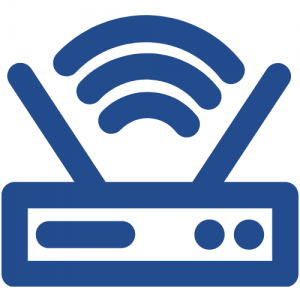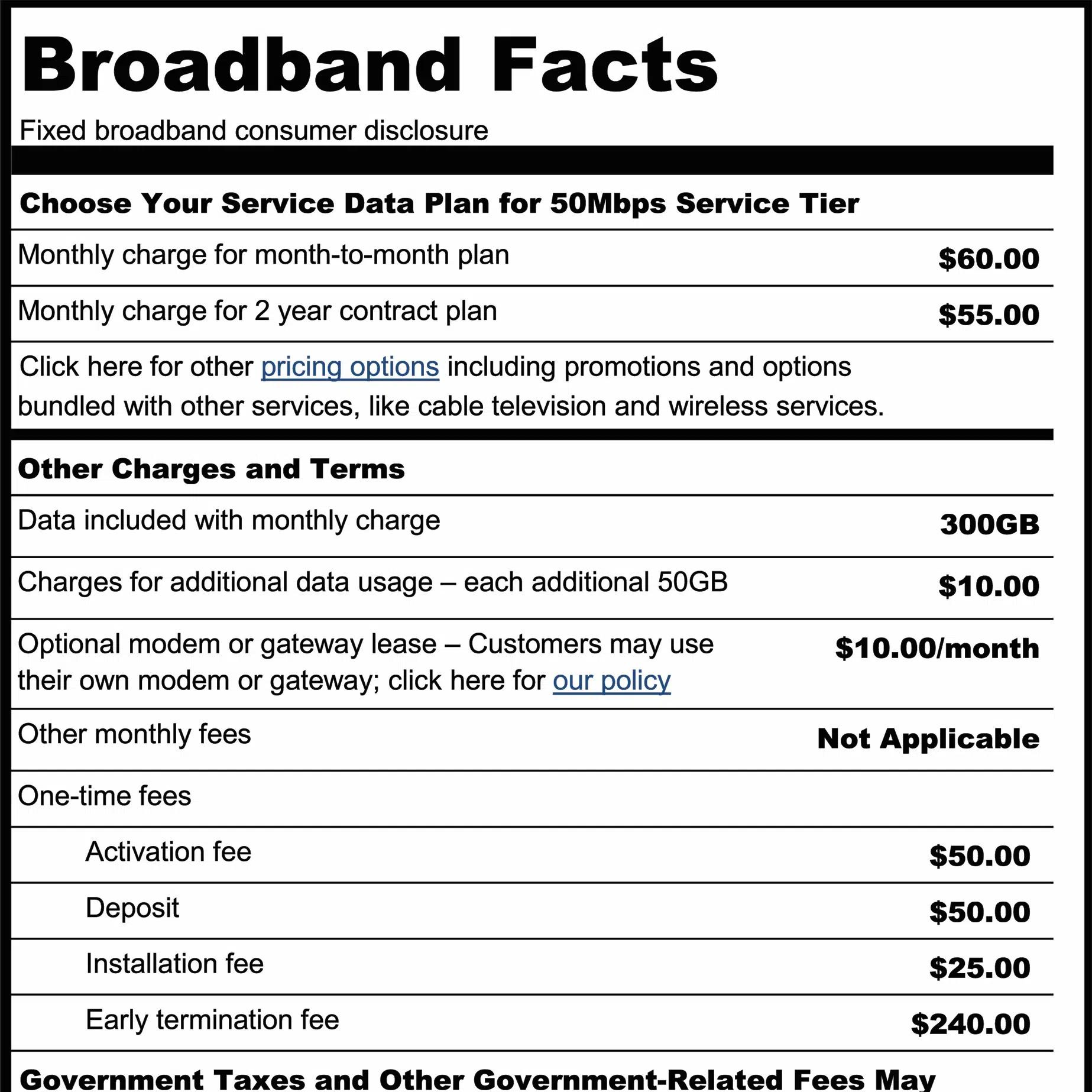FCC Compliance Testing
We help ISPs meet network testing obligations and comply with reporting requirements using Stamper IoT®
Discover the Trusted Solution for Regulatory Speed and Latency Testing
Stamper IoT Boxes are relied upon by ISPs nationwide for assessing network speed performance accommodating programs such as RDOF, BEAD, and Broadband Label Testing. Our platform offers a straightforward and fully managed solution that simplifies the testing process by managing test schedules, monitoring networks, and generating pre-formatted results for regulatory submissions. If you seek a hassle-free, vendor agnostic solution without the need for hardware upgrades, your search ends here.
Understanding Your Testing Window and Data Submission Deadlines
Staying compliant with the FCC’s CAF performance testing requirements isn’t just about running accurate tests, it’s also about timing and reporting.
When Does Testing Happen?
CAF performance testing must be conducted during FCC-defined test periods. These occur during peak usage hours (between 6:00 PM and 12:00 AM local time) and must be run one week per quarter each year. For each subscriber in the testing sample, 1 test per hour must be run for both download and upload speeds, and 1 latency test per minute.
Why the Time Frame Matters
Testing during this designated window ensures that ISPs deliver consistent service under typical peak traffic conditions. This aligns actual performance with customer experience, rather than artificially ideal test conditions.
Submission Deadlines to Know
ISPs must compile, validate, and submit test results to the Universal Service Administrative Company (USAC) using approved formats. Missed submissions or incomplete data may lead to financial penalties or loss of support funding.
How We Help
Our platform automates time-aligned test scheduling, securely stores test logs, and formats submission-ready datasets according to USAC and FCC compliance rules. You stay on schedule and on budget.

Real-Time Dashboard
Stay on top of testing with a real-time dashboard that provides up-to-the-minute results.

Quarterly Usage Analytics
Get detailed insights with quarterly analytics that help you spot trends and identify areas for improvement.

Fully Managed
Leave your testing to the experts with a fully managed service that is handled by ATS specialists.

Automated Scheduling
Never miss a deadline with automated, scheduled tests to ensure consistent success.

Crosstalk Mitigation
Stampers make multiple attempts to conduct tests and mitigate crosstalk to achieve the best results.

Optimal Routing
Our CDN-powered tests use the most optimal route available to ensure the best possible results.
Enhance Performance with Our National Test Network

Since 2020, we’ve deployed thousands of Stamper IoT devices across North America, featuring servers near FCC-designated IXP locations. We collaborate with ISPs to pinpoint areas for improvement and develop effective solutions, ensuring optimal network performance.
Our goal is to simplify compliance, allowing you to prioritize delivering high-quality broadband services to your customers.
Gain Complete Visibility Down to the Individual Test
Visualize Your Data
Track and analyze your speed and latency metrics effortlessly with our managed dashboard.
Real-Time Tracking
Monitor ongoing tests from 6pm-12pm in your local time zone. View individual results and upcoming tests.
Results Done Easy
Download pre-formatted results directly from our user-friendly dashboard at the end of your testing week.

Broadband Nutrition Labels & BEAD Support

Our expertise includes testing Stamper IoT devices with our innovative methodology to ensure compliance with new nutrition labeling regulations. This comprehensive, third-party backed testing solution provides you with the peace of mind of knowing you meet all compliance demands.
Moreover, our solution offers further opportunities beyond Performance Testing for both pre and post-grant awards. To discover more, click on the link provided below.
CAF Performance Measures Testing Webinar – 1/19/2022
FAQs About Connect America Fund (CAF), RDOF, and BEAD Performance Testing
What Speeds Can You Test?
We can test a range of speeds from 4/1mbps to 1 gig speeds. Contact us to test speeds higher than 1 gig.
Is There Product Support?
Our team is very communicative throughout the testing process.
How Much Does It Cost?
Prices are based on your chosen speed tier. Bulk discounts available.
Can testing requirements be waived or extended?
- Yes, in cases of major disruptive events (e.g., natural disasters) that negatively impact a carrier’s broadband performance, waivers or extensions may be granted by the relevant regulatory body (FCC for CAF/RDOF, NTIA/state for BEAD)
What happens if a carrier fails to meet the performance standards?
Carriers failing to meet the required performance standards may face withholding or recovery of support based on their level of non-compliance. There may also be a one-year “cure period” to address shortfalls, during which withheld funds may be recovered upon compliance. For RDOF, in the worst-case scenario (less than 55% compliant), up to 25% of monthly funding can be withheld. Even during pre-testing, failure to submit results can lead to a 5% funding withholding.
When are testing results submitted?
- CAF and RDOF: Quarterly filing and certification of results is required, typically within two weeks of the end of the quarter, starting in 2025 for CAF and 2026 for RDOF.
BEAD: Results are submitted to state broadband offices twice a year during the buildout and for 10 years after BEAD-funded networks are constructed.
Are "pre-testing" periods allowed?
- Yes, for CAF and RDOF, the FCC has a “pre-testing” mandate, allowing carriers to conduct performance measures testing and address issues without penalties before the formal testing and reporting period begins. For RDOF, pre-testing began in 2025, with official testing starting in 2026.
What are the acceptable methods for conducting testing?
- For all programs, carriers can generally choose from:
- Utilizing the Measuring Broadband America (MBA) testing program.
- Using existing network management systems or tools (e.g., TR-143 Standard, ping tests).
Using a provider or vendor developed testing solution that uses software installed on residential gateways or equipment attached to residential gateways, such as our Stamper Box.
How many locations need to be tested?
- CAF and RDOF: The number of required testing locations varies based on the number of supported subscribers in each service tier per state:
- 50 or fewer subscribers: 5 locations
- 51-500 subscribers: 10% of total subscribers
- Over 500 subscribers: 50 locations
BEAD: Tests are administered to 10% of the customers of a given ISP across a whole state for each technology deployed. There is no cap on the number of locations, meaning larger networks may have significantly more test locations compared to CAF/RDOF.
What time of day is testing performed?
For all programs, testing is generally conducted between 6:00 PM and 12:00 AM (local prime time), including weekends, to capture peak network usage.
How often is testing conducted for each program?
- CAF and RDOF: Carriers are required to conduct one week of speed and latency testing at a random sample of supported subscriber locations in each quarter of the calendar year.
BEAD: Tests are typically conducted twice per year throughout the federal interest period (e.g., ten years for fiber networks after completion). States may, at their discretion, require more frequent testing (no more than quarterly).
What are the performance standards for speed and latency for each program?
- CAF (Connect America Fund):
- Speed: At least 80% of download and upload speed measurements must be at or above 80% of the CAF-required speed tier. For example, for 10/1 Mbps service, 80% of download tests must be ≥ 8 Mbps, and 80% of upload tests must be ≥ 0.8 Mbps.
- Latency: At least 95% of all network round-trip latency measurements must be at or below 100 milliseconds (ms) between the customer premises and an FCC-designated Internet Exchange Point (IXP).
- RDOF (Rural Digital Opportunity Fund):
- Speed: RDOF participants must offer broadband service at speeds consistent with their winning bids, which must be at least 25 Mbps downstream and 3 Mbps upstream (25/3 Mbps). Similar to CAF, 80% of download and upload speed measurements must be at or above 80% of the committed speed tier.
- Latency: Similar to CAF, 95% of all network round-trip latency measurements must be at or below 100 milliseconds (ms) between the customer premises and an FCC-designated IXP.
- BEAD (Broadband Equity, Access, and Deployment):
- Speed: At least 95% of speed tests must meet the committed speed for the project, which is typically 100 Mbps download and 20 Mbps upload (100/20 Mbps) for residential and business locations, and 1 Gbps download and 1 Gbps upload (1/1 Gbps) for anchor institutions. For compliance, 80% of both download and upload speed measurements must meet or exceed 80% of the required speed.
- Latency: Latency must be under 100 milliseconds (ms) 95% of the time.
Reliability: Networks should be out of service no more than 48 hours during a year.
What specific metrics are measured in performance testing across these programs?
- All programs primarily measure:
- Download Speed: The rate at which data is transferred from the internet to the user’s device.
- Upload Speed: The rate at which data is transferred from the user’s device to the internet.
- Latency (Round-Trip Time – RTT): The time it takes for a signal to go from the user’s device to a server and back. Lower latency is crucial for real-time applications like video calls and online gaming.
Reliability (primarily for BEAD): Measures the uptime of the network, typically requiring minimal outage hours per year.
Who is required to conduct federal broadband performance testing?
Broadband providers who receive support from programs like the Connect America Fund (CAF Phase II, ACAM, Enhanced ACAM), the Rural Digital Opportunity Fund (RDOF), and the Broadband Equity, Access, and Deployment (BEAD) program are required to conduct performance testing.
Why is federal broadband performance testing required?
The various federal agencies (FCC, NTIA) mandate this testing to ensure that consumers in supported areas receive the promised quality of broadband service, and to safeguard the investment of taxpayer dollars in expanding broadband access to rural and high-cost communities. It’s a critical component of ensuring accountability and closing the digital divide.
What is federal broadband performance testing?
Federal broadband performance testing is a mandatory requirement for internet service providers (ISPs) receiving federal funding (such as CAF, RDOF, and BEAD) to expand or improve broadband service in unserved and underserved areas. These tests ensure that the broadband services delivered meet specific speed, latency, and reliability standards, holding providers accountable for the use of federal subsidies and guaranteeing quality service for consumers.

Ready to Get Started? Let’s Talk
We partner with all service providers, regardless of size, to deploy our performance testing solutions and bridge the digital divide.
Join us in closing the digital gap! Learn more about our partnership approach and how our performance testing solutions can help.
